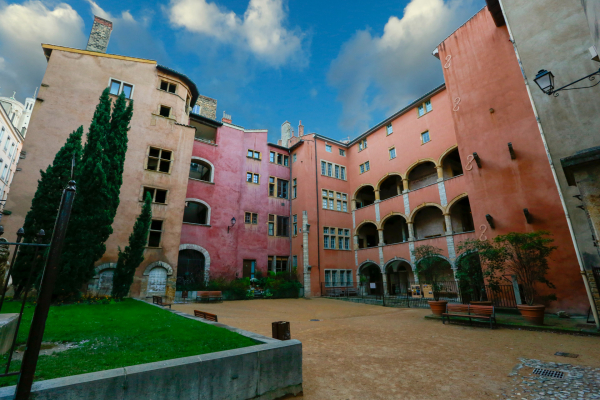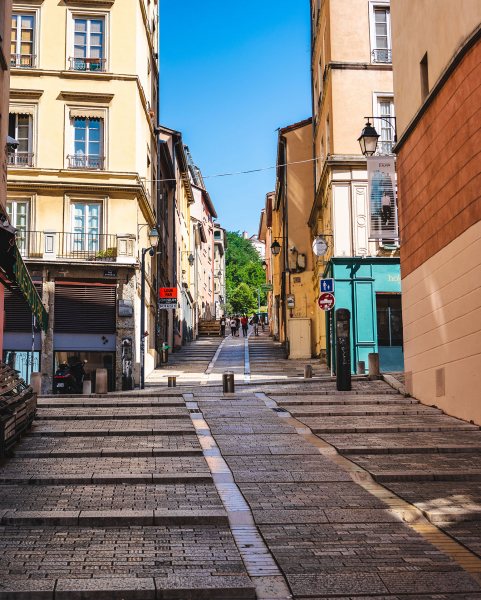Fourvière
Lyon’s oldest hill is home to the remains of Lugdunum, capital of the Gauls during the Roman Empire. Two ancient theatres recall Lyon’s earliest times: the grand theatre, built in 1 BCE, and extended in 1 CE, was dedicated to drama and could hold up to 10,000 spectators. The small theatre, known as the Odeon, built in 1 CE, was a venue for public readings and recitals. Next to the theatres, the Lugdunum Museum displays archaeological discoveries made in Lyon. You don’t need to dig for long before you find remains of the past in Lyon!
Fourvière Basilica, an iconic local landmark, built between 1872 and 1896 by Pierre Bossan, stands proudly on top of the hill. Stepping inside, visitors can discover the richness of its interior and the Byzantine influence in its gilded mosaics.
From Fourvière esplanade, with its stunning view over Lyon, a path leads down through Le Jardin du Rosaire, a haven of greenery.
Must-see sites on Fourvière Hill:
> Notre-Dame de Fourvière Basilica
> LUGDUNUM ancient Theatres and Museum
> Jardins du Rosaire, a garden on the side of the hill, beneath Fourvière Basilica
The Vieux Lyon (Old Lyon) district
Between Fourvière Hill and the Saône, Vieux Lyon (Old Lyon) has preserved all the charm of its narrow Renaissance streets.
Travel back to a time when Lyon hosted fairs that drew merchants from all over Europe to trade. Its fifteenth and sixteenth-century buildings were home to rich families of Italian, German and Flemish merchants and bankers.
Secretive and mysterious, Vieux Lyon can be explored by stepping through doorways into its traboules (hidden passageways through buildings connecting streets) and inner courtyards, which reveal the wealth of their former owners.
While the buildings’ facades may seem simple, this is to better show off their decorations to visitors who venture through the doorways!
Around the Gothic Saint-Jean Cathedral, Rue Saint-Jean is lined with restaurants and shops. Along Rue du Bœuf, shops of creative designers stand alongside Michelin-starred restaurants.
Don’t hesitate to wander through the district’s narrow paved streets!
Must-see sites in Vieux Lyon:
> Saint Jean Cathedral and its astronomical clock.
> Saint-Georges (19th century) and Saint-Paul churches (from 11th to 19th C.)
> Gadagne Museums: Musée d’Histoire de Lyon (historical museum of Lyon) and Musée des Arts de la Marionnette (puppet museum), in Lyon's largest Renaissance building.
> Cinema and Miniature Museum: with miniature models and Hollywood sets!
> Place de la Trinité for the charm, of its old buildings.
> Place du Change
> Courtyards and traboules (passageways): a free map showing the courtyards and traboules open to the public is available at the Tourist Office on Place Bellecour. Come and visit us!






